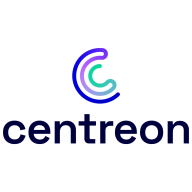

Centreon and Elastic Observability compete in the IT monitoring and observability category. Centreon seems to have an edge in extensive infrastructure monitoring and cost-effective scalability, while Elastic Observability stands out in data collection and real-time tracking.
Features:Centreon features extensive scalability for unlimited device monitoring, active monitoring, and customizable reports. It offers event logs, downtime management, and notable tools like Centreon BI reports and Centreon Map. Elastic Observability is known for strong data collection, powerful search with Kibana, and customizable visualizations. It integrates well with other solutions and emphasizes real-time tracking and network performance.
Room for Improvement:Centreon could enhance its UI responsiveness, improve its API functionality, and expand service monitoring for cloud and databases. It also needs easier device integration and better network discovery. Elastic Observability needs to improve its visualization features, expand process monitoring, and enhance APM capabilities. Additionally, it faces challenges with the initial setup complexity and needs more customization options.
Ease of Deployment and Customer Service:Centreon supports versatile deployment for on-premises environments with strong vendor support, though not 24/7. Users often rely on Centreon support, with varying quality based on issue complexity and region. Elastic Observability supports on-premises and hybrid cloud infrastructures, backed by comprehensive documentation and community support. However, it presents a steeper learning curve for new users. Elastic's technical support is generally reliable but may vary regionally.
Pricing and ROI:Centreon offers an open-source platform with optional paid modules, suited to smaller businesses but potentially pricey for larger enterprises needing advanced features. Elastic Observability's pricing is competitive for large-scale users but can be high for smaller firms. Both promise solid ROI, with Centreon facilitating fast resolutions and extensive monitoring, while Elastic offers affordability and wide feature integration, leading to cost savings through reduced downtime and efficient resource allocation.
Centreon provides timesaving and costsaving benefits as it lets us manage multiple devices on a single platform.
It significantly saves time by automating monitoring tasks and reduces costs as it requires fewer resources.
We do not have direct access to Centreon's technical support.
If issues arise, like services appearing as down in Centreon, technical support helps check the polar-server communication.
Technical support from Centreon responds within 24 hours and resolves issues quickly.
Elastic support really struggles in complex situations to resolve issues.
Occasionally, for several hours, we do not receive any alerts, causing a business impact.
We use other tools for adding and deploying configured devices, but direct access from Centreon would be beneficial.
Elastic Observability seems to have a good scale-out capability.
Elastic Observability is easy in deployment in general for small scale, but when you deploy it at a really large scale, the complexity comes with the customizations.
What is not scalable for us is not on Elastic's side.
Sometimes we do not receive alerts, causing business impact, and users ask why no alerts were received.
Centreon is a much more straightforward and stable tool compared to Icinga.
There are some bugs that come with each release, but they are keen always to build major versions and minor versions on time, including the CVE vulnerabilities to fix it.
It is very stable, and I would rate it ten out of ten based on my interaction with it.
Elastic Observability is really stable.
Enhancements are needed in identifying configuration issues, providing real-time alerts in case of issues, and improving the HTTP configuration tasks.
Reliability is sometimes an issue. Centreon has a developer mode and production mode, but sometimes alerts don't come through in production mode.
While Centreon excels at server-level monitoring, it lacks the ability to track web app availability and latency, unlike Dynatrace, which is efficient in this area.
For instance, if you have many error logs and want to create a rule with a custom query, such as triggering an alert for five errors in the last hour, all you need to do is open the AI bot, type this question, and it generates an Elastic query for you to use in your alert rules.
It lacked some capabilities when handling on-prem devices, like network observability, package flow analysis, and device performance data on the infrastructure side.
Some areas such as AI Ops still require data scientists to understand machine learning and AI, and it doesn't have a quick win with no-brainer use cases.
Centreon's pricing is not very expensive.
The license is reasonably priced, however, the VMs where we host the solution are extremely expensive, making the overall cost in the public cloud high.
Elastic Observability is cost-efficient and provides all features in the enterprise license without asset-based licensing.
Observability is actually cheaper compared to logs because you're not indexing huge blobs of text and trying to parse those.
Monitoring is a fundamental pillar of technical support, and Centreon streamlines this process, reducing the need for extensive manual checks.
Centreon's real-time monitoring, despite having some manual aspects, supports us in managing our operations effectively.
Centreon allows us to monitor all of our devices on one platform.
The most valuable feature is the integrated platform that allows customers to start from observability and expand into other areas like security, EDR solutions, etc.
the most valued feature of Elastic is its log analytics capabilities.
All the features that we use, such as monitoring, dashboarding, reporting, the possibility of alerting, and the way we index the data, are important.
| Product | Market Share (%) |
|---|---|
| Elastic Observability | 2.9% |
| Centreon | 2.6% |
| Other | 94.5% |


| Company Size | Count |
|---|---|
| Small Business | 11 |
| Midsize Enterprise | 5 |
| Large Enterprise | 14 |
| Company Size | Count |
|---|---|
| Small Business | 8 |
| Midsize Enterprise | 4 |
| Large Enterprise | 16 |
Centreon is an all-in-one IT monitoring solution that is a network, system, applicative supervision, and monitoring tool. It is free and open source, and one of the most flexible and powerful monitoring softwares on the market.
Centreon Features
Centreon has many valuable key features. Some of the most useful ones include:
Centreon Benefits
There are several benefits to implementing Centreon. Some of the biggest advantages the solution offers include:
Reviews from Real Users
Below are some reviews and helpful feedback written by Centreon users.
PeerSpot user Thor M., CEO at a tech services company, says, "The single-pane view provides us a view of all of our network infrastructure, and it is one of the most important tools that we use to see the status of our customers' networks. It provides a nice benefit when it comes to helping align IT operations with business objectives. The top-down views, dashboards, and business context reporting are things that are nice to have because you want to be able to show the customer that everything is working, that problems have been addressed, and that you're providing value.”
Thomas C., Managing Director, Canada at Eva, comments, “The most valuable feature of the solution is the flexibility, the ability to integrate all kinds of equipment. As long as something has an IP you can monitor it. What we try to achieve all the time is not only saying a company's system is available, but to give additional data on the performance of the equipment. So the flexibility is what matters the most to us, where we can script everything. Centreon has a lot of Plugin Packs, meaning they support, by design, a lot of devices. And on top of that, we have the ability to add our own scripts and do whatever we want and display the data as we want in the central dashboards.”
Marcilio L., President at ITS Solucoes, expresses, "The dashboards are valuable because they ease troubleshooting and viewing. It becomes easier to locate the source of a problem... The dashboards make it easier to communicate with our clients. They don't want to see the alert console, they want to see a beautiful dashboard representing their network and their business and to watch it in case something is wrong in their environment."
Florent Q., Network Engineer at a computer software company, mentions, "The most valuable feature is that we can manually configure everything we need. After it comes inside the interface of Centreon, you can display it. Because the interface is quite user-friendly, you can manually configure the configuration very deeply, which is very pleasant and useful because you can monitor and see everything on your service list, dashboard, or MAP. The most useful feature for me is that you can create your own plugin and monitoring query."
Elastic Observability offers a comprehensive suite for log analytics, application performance monitoring, and machine learning. It integrates seamlessly with platforms like Teams and Slack, enhancing data visualization and scalability for real-time insights.
Elastic Observability is designed to support production environments with features like logging, data collection, and infrastructure tracking. Centralized logging and powerful search functionalities make incident response and performance tracking efficient. Elastic APM and Kibana facilitate detailed data visualization, promoting rapid troubleshooting and effective system performance analysis. Integrated services and extensive connectivity options enhance its role in business and technical decision-making by providing actionable data insights.
What are the most important features of Elastic Observability?Elastic Observability is employed across industries for critical operations, such as in finance for transaction monitoring, in healthcare for secure data management, and in technology for optimizing application performance. Its data-driven approach aids efficient event tracing, supporting diverse industry requirements.
We monitor all IT Infrastructure Monitoring reviews to prevent fraudulent reviews and keep review quality high. We do not post reviews by company employees or direct competitors. We validate each review for authenticity via cross-reference with LinkedIn, and personal follow-up with the reviewer when necessary.